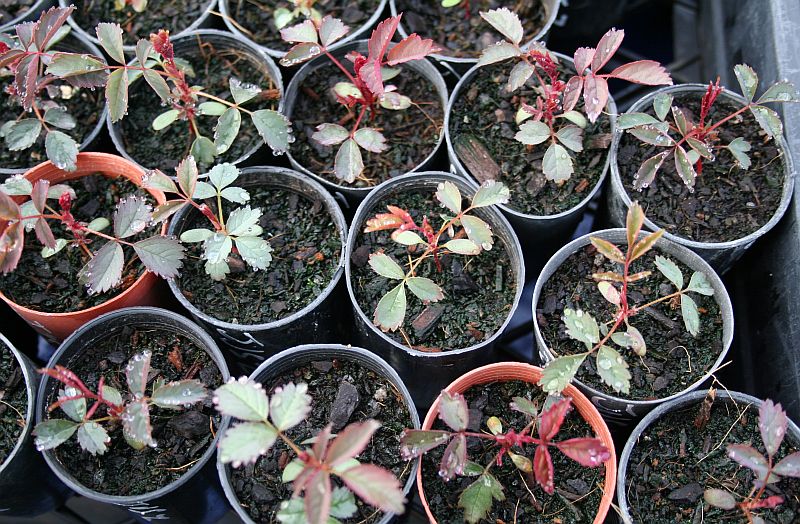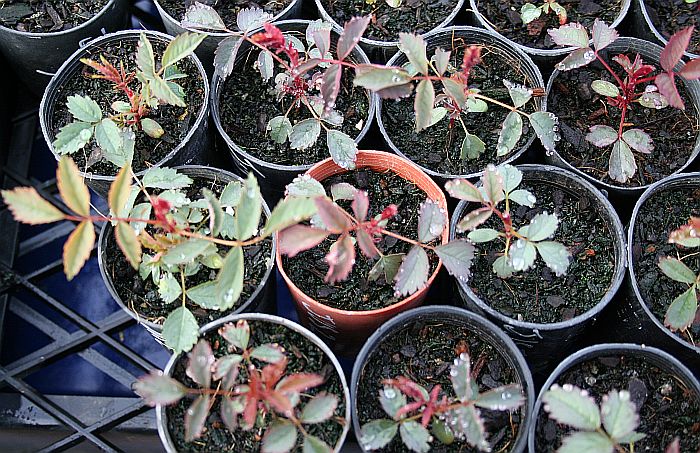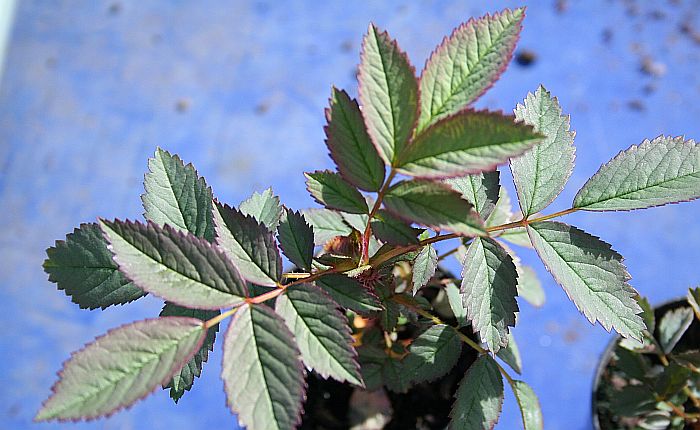Here are a few Ann Endt seedlings which germinated for me this year. Jo you were right saying there would be some variation amongst the seedlings.


They look lovely, Warren!
That is a nice bunch of seedlings. Are they mostly planned crosses or are some of them open pollinated?
Thanks Joe for the seeds ![]()
Jr, They are OP seed from Joe Berg, I can see some variation in them already. This will be great when the time comes to inject these into my breeding program.
Warren
Very nice looking batch. I have wondered about A.E., but wouldn’t think she would like it here in Central TX. Is A.E. at all heat, drought and heavy soil tolerant?
Joe, do you have any guesses as to what could have cross pollinated them?
In a year or two Warren should be able to let you know a thing or two about how they handle heat, Philip…
I actually don’t have much clue what could have pollinated them or even if Ann is for sure self-sterile or to what degree. They were growing near quite a variety of roses but I can’t remember which were blooming at the same time as she was.
I have a bunch of seedlings growing from the same cross and indeed I’m curious to see if any have inherited the reblooming trait, and, if so, at what age they will first start to bloom. I have a few Ann Endt x Petit PInk, and they are so far not showing juvenile bloom.
Foliolosa that is a parent has a natural area that extend rather deep in south.
I did the foliolosa x rugosa cross 15 years ago, long before growing Ann Endt.
Foliolosa has better roots than rugosas and here has no problem with heat and drought.
Therese Bugnet grew ok here in our summer.
That’s good to know, Pierre. I fell in love with a Paul Barden offspring, purple Folio-Chief, from the pictures and descriptions, '79-02-PFC' Rose Photo
I would love to try for similar colors using this species. (Does anyone know how I might obtain, e.g., the R. foliolosa that Paul Barden used? Or does anyone have a good stock of wild ones on hand?)
Paul thought his “foliolosa” could be a foliolosa x rugosa seedling. Foliage agreed.
Basye’s Purple is an example of this species cross color possibilties.
But to obtain this kind of colors just foliolosa is needed.
No difficulties to get the dark colors with i.e. more petals.
Only I will repeat what I said to Paul: This kind of dark colors I love too are strongly linked with bad features “among which” sparser shorter lived and hypersensitive foliage I do not succeed breeding out after some 15 years growing this sort of progenies.
There are other bad feature that are difficult to bred out.
The breeding out process could be commented.
Sorry if this has been asked before but is Ann Endt a diploid?
Rob, not that I know, but it almost has to be a diploid if indeed it is a cross between rugosa and foliolosa.
I had some seedlings germinate this year from pollen of Petit Pink and Candy Oh. Interestingly the Candy Oh seedlings, while looking pretty good at first, ended up dying sometime after developing true leaves. The Petit Pink seedlings survived and I have five in the field. No blooms yet, but they appear to be hybrids.
I’ve attempted many pollinations on Ann this year, and the earliest ones using White Out pollen seem to have failed. It is too soon to tell on the rest. So I’m wondering if Ann Endt might be a little less accepting of pollen than either foliolosa or rugosa.
My foliolosa isn’t a dark pink; it is a medium to light pink. I’m psyched to have two rebloomers amongst 52 R. foliolosa x Lemon Fizz seedlings. Always slightly depressing to read of Pierre’s frustrating experiences with it, but I am stupid enough to try. Maybe, re-reading his post, he is talking specifically about darker colors, and not so much about foliolosa itself.
Kim
I must be stupid as well. I just ordered it for delivery next week. I’m excited about exploring her genes.
I can’t help but think that, if Paul still has his purple folio-chief plant, he could propagate and sell it to some of us here.
That woukd be awesome Philip.
I finally have Ann Endt! Now to plan next season’s crosses with her.
This is a comparison of a treated Anne Endt seedling with Trifluralin. The larger is the untreated, size difference is probably due to the interruption of growth after it was treated, they tend to sit there looking all distorted for a period of time.
Warren


Warren,
Did you start out treating Ann Endt embyos with Trifularin or the seedling after it germinated? Would love to here how your treated seedling does.
Rob
Hi Rob,
I treated the seedlings when they were at the cotyledon stage, 0.014% Trifluralin solution was placed on the growth tip and then placed in a humidity chamber for 3 to 4 days. I ensured that there was a drop of solution on this tip and some times had to replace it. Do not expect any growth for at least a month.
Warren